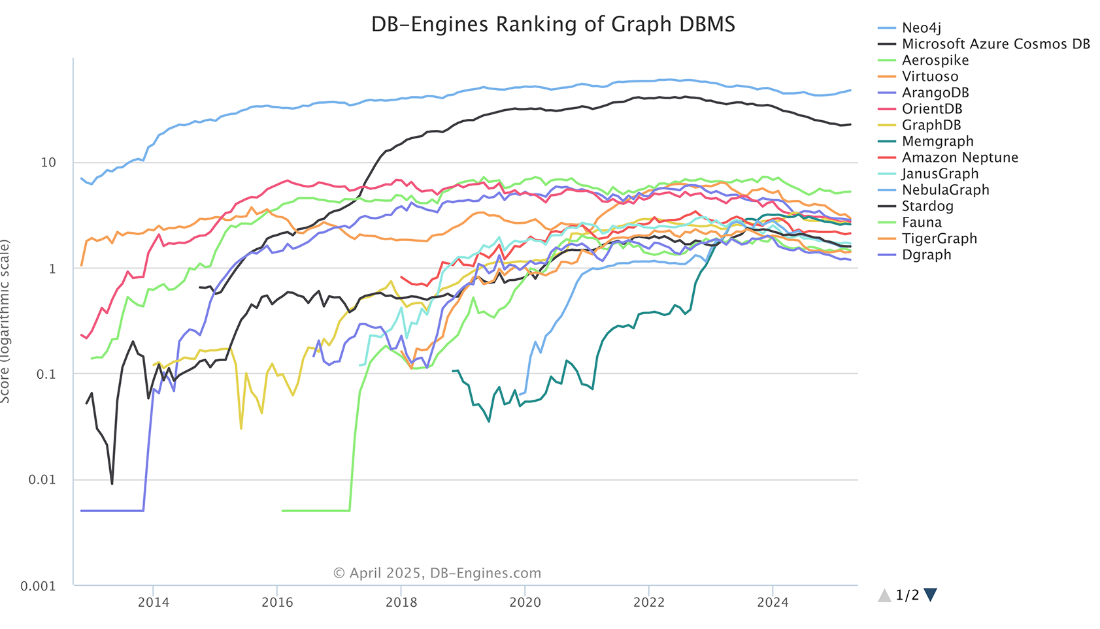appendix B Neo4j
Throughout the book, examples, code, and exercises are based on a specific graph database: Neo4j. Nevertheless, all the theories, the algorithms, and even the code can be easily adapted to work with any graph database. We selected this database because
- We know it inside and out.
- It is a native graph database (with all the related consequences, as explained in the book).
- It has a broad community of experts.
According to DB-Engines (https://db-engines.com/en/ranking_trend/graph+dbms), Neo4j has been the most popular graph DBMS for a number of years (figure B.1).
Figure B.1 DB-Engines ranking of graph DBMSs

Note DB-Engines scoring considers multiple factors, from the number of mentions on websites to the frequency of technical questions on Stack Overflow and DBA Stack Exchange, and from the number of related jobs offered to its relevance in social network.
This appendix provides the minimum amount of information necessary to get started with Neo4j and use it in the book. We introduce Neo4j, give installation instructions, and describe the Cypher language (the language used to query the database). We’ll also discuss the configuration of some plugins used in the examples.